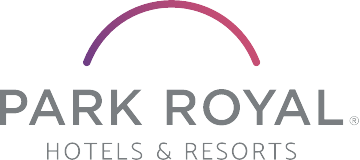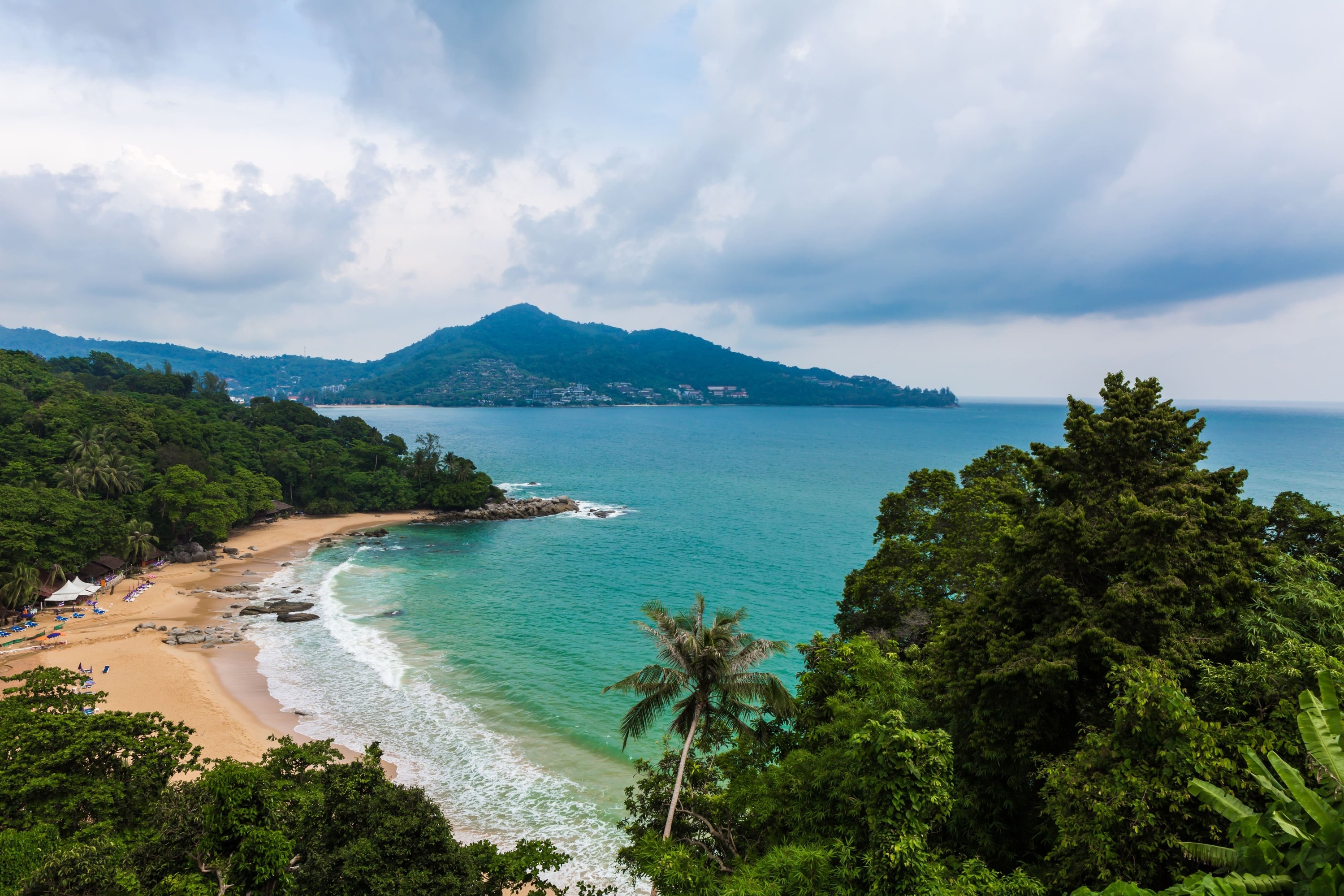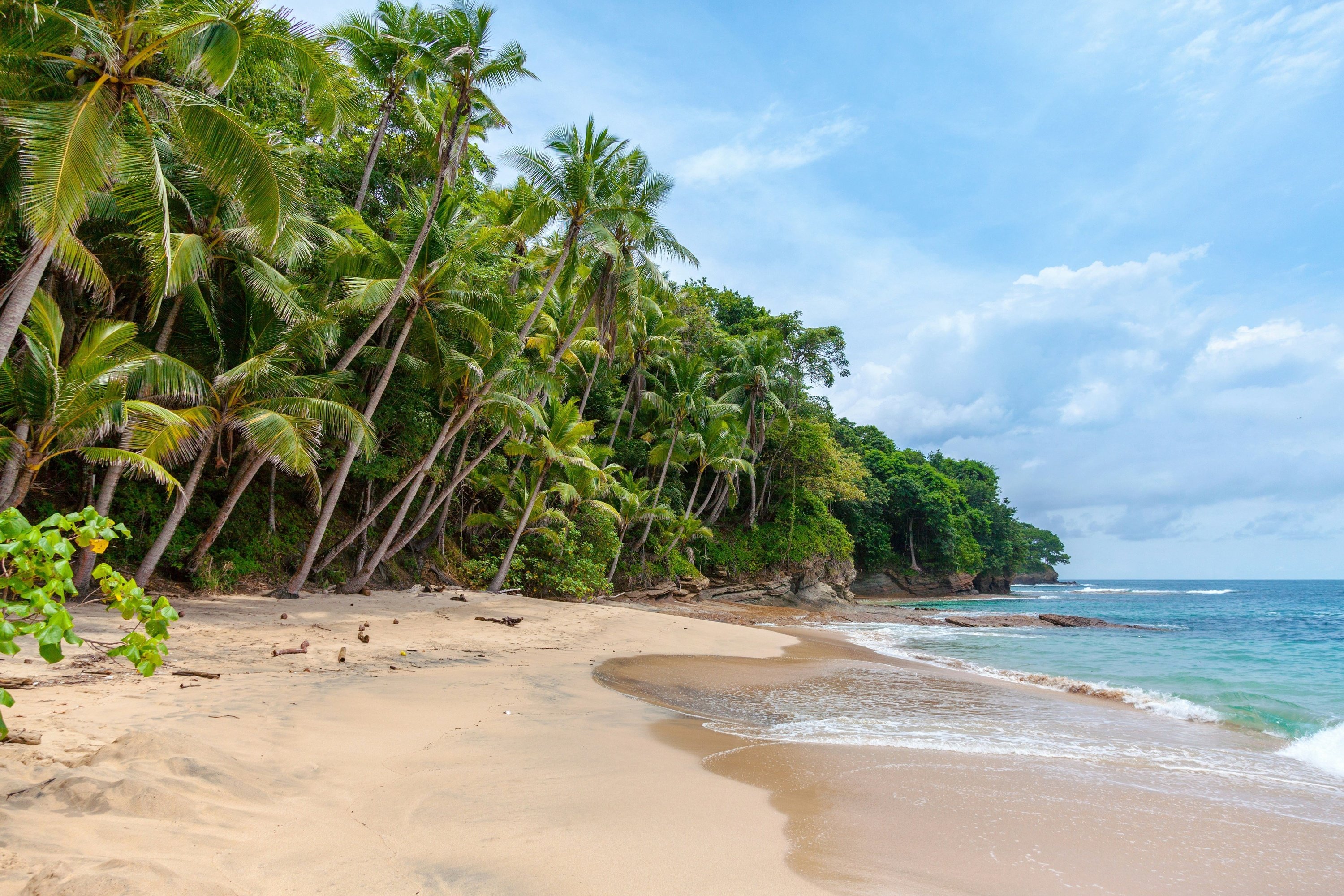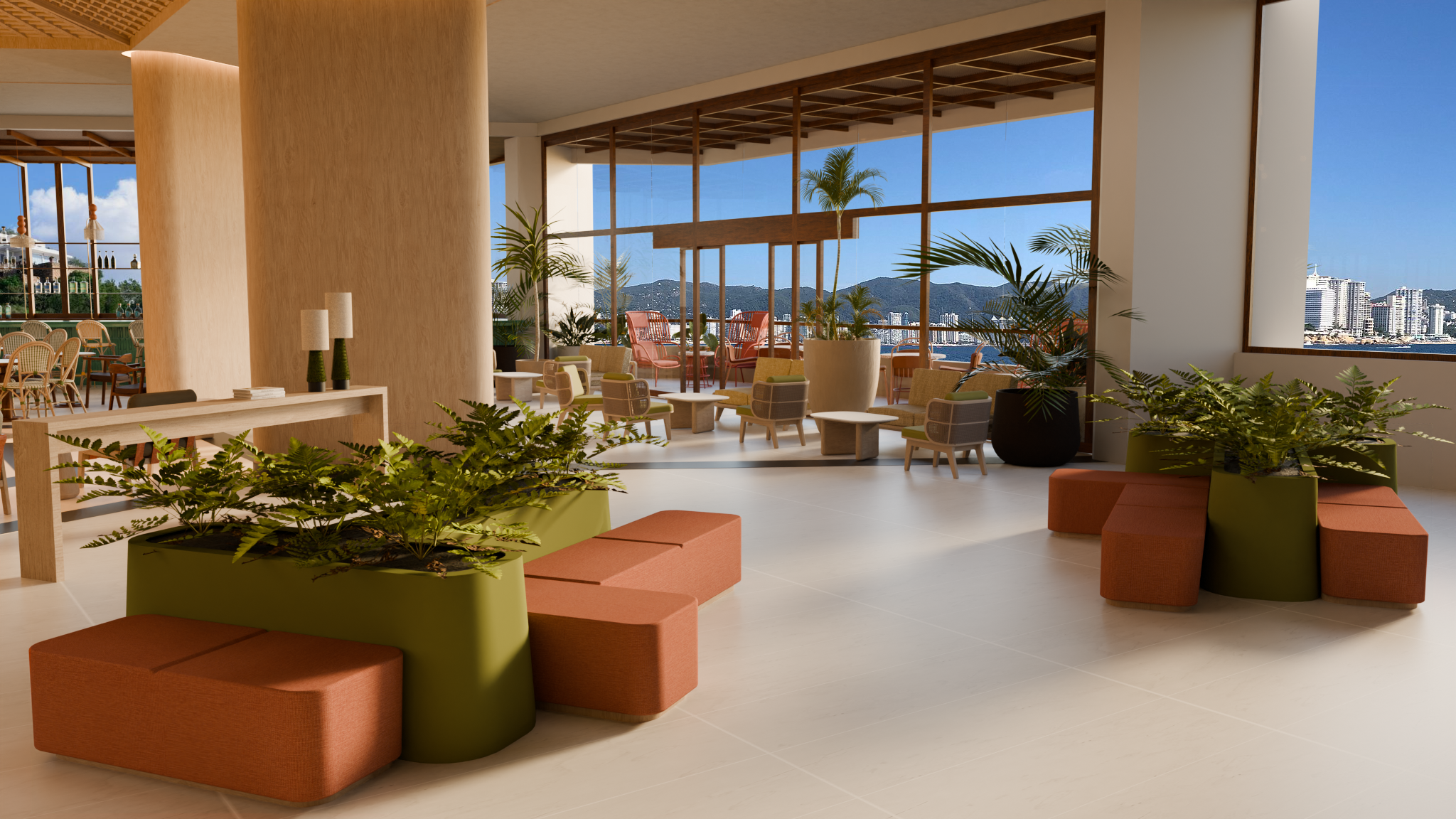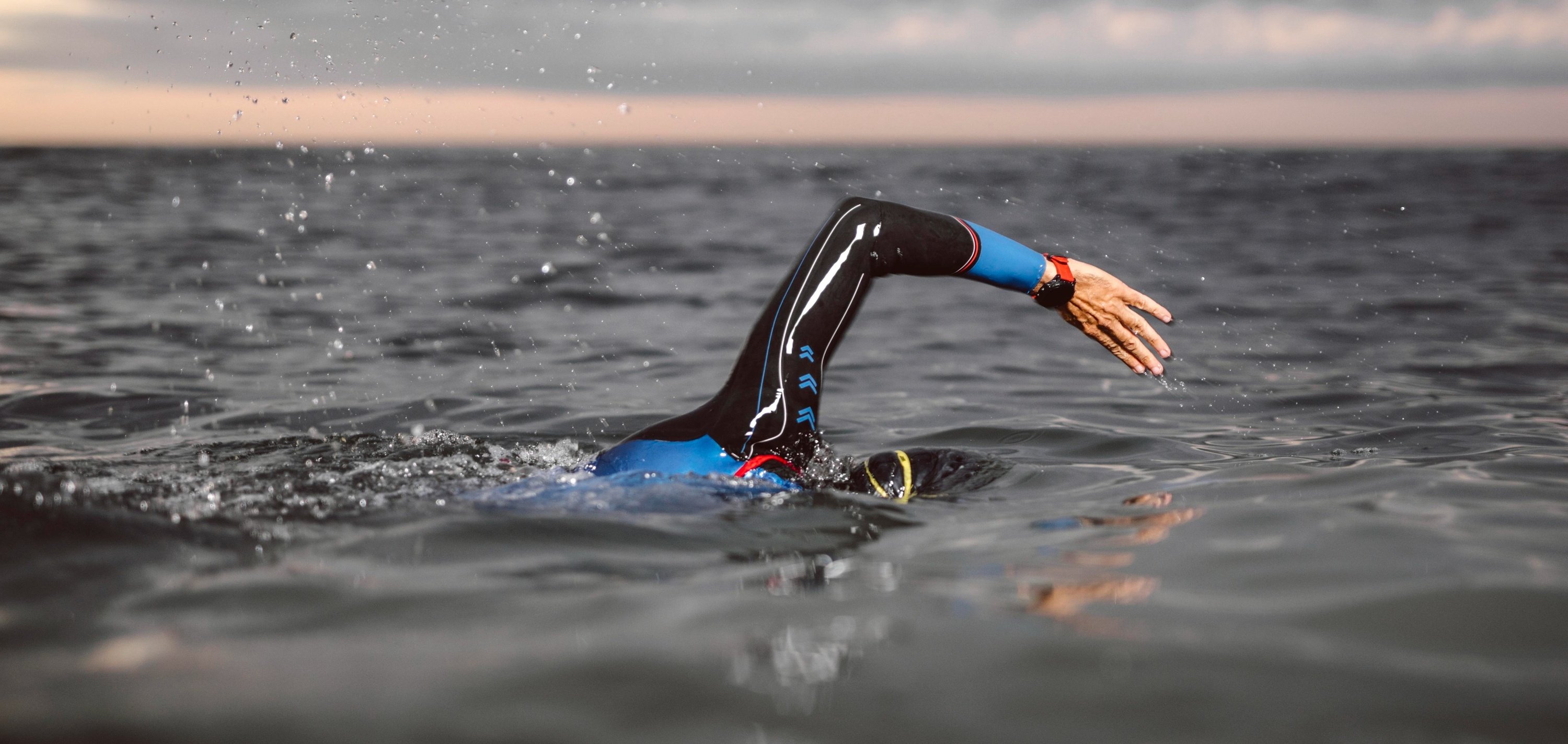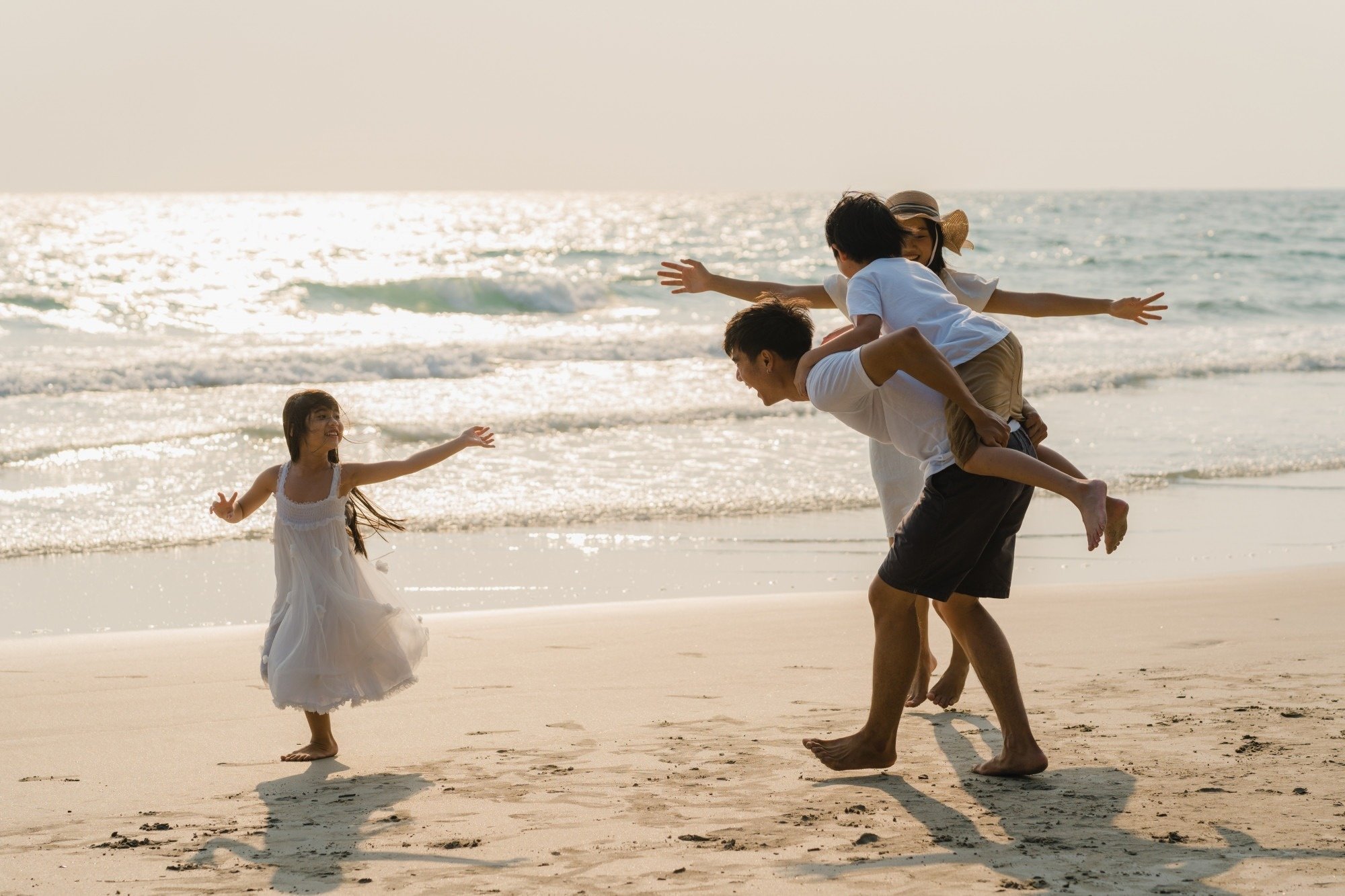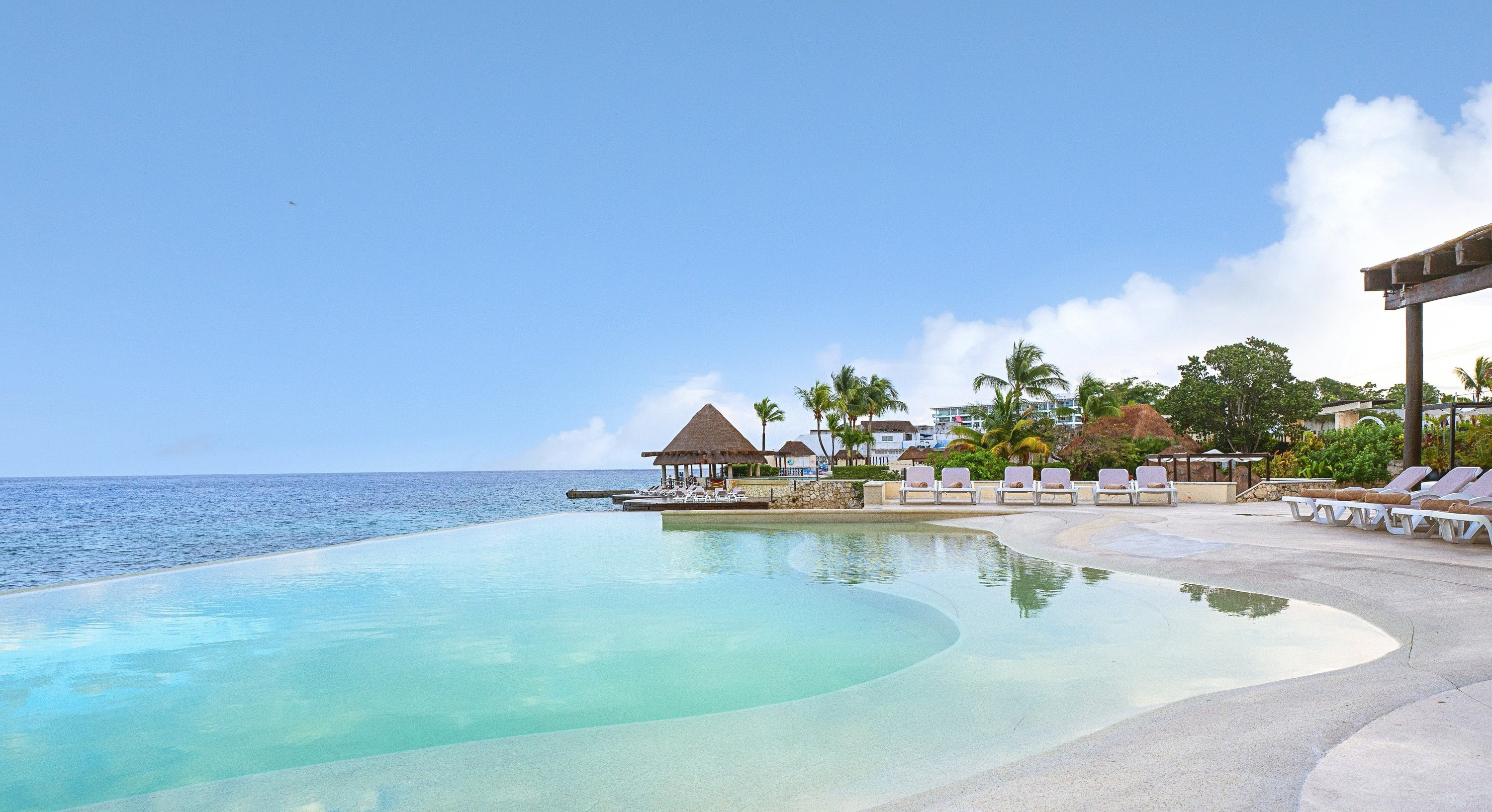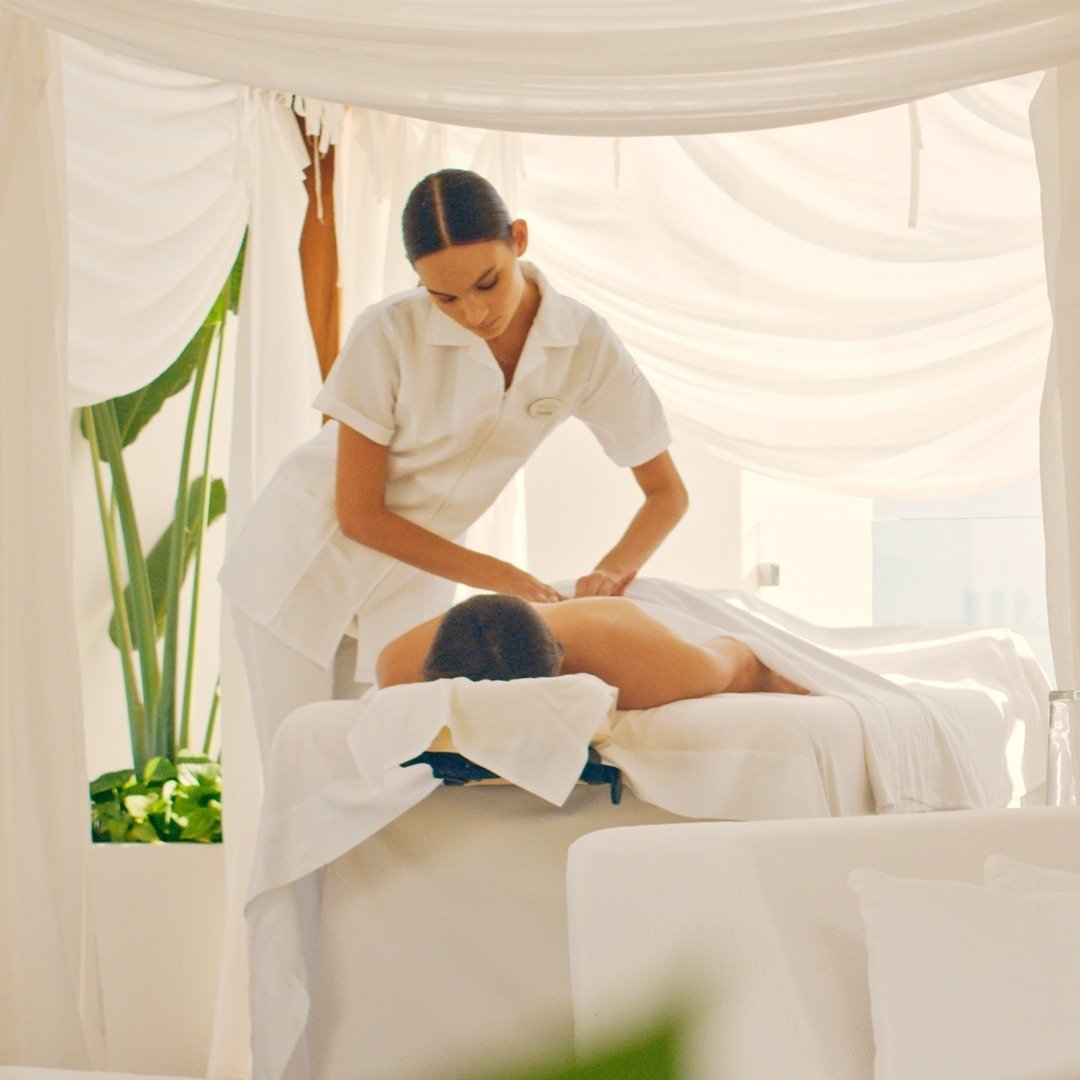What to see and do in Coba: a great Mayan city
Destinations 26/03/2024
Get to know the past on an unforgettable trip to the golden age of the Mayans. Welcome to the majesty of Coba! The ancient Mayan city hidden in the jungle of the Yucatan Peninsula (Mexico) and founded between 500 and 900 AD.
Coba is located in the state of Quintana Roo, halfway between Tulum and Valladolid. Surrounded by dense tropical jungle and 5 lakes (hence its well-known name as "the city of 5 lakes"), the Mayan city emerges as a majestic testimony of the greatness of the civilization that inhabited it, in fact, it was the largest Mayan city in the north of the Yucatan Peninsula.
We open its doors to embark on a spectacular tour through the majestic Mayan ruins and the magical crystalline cenotes, immersing ourselves in the historical and natural wealth that this destination has to offer.
It is one of the most visited sites in Mexico, due to its location and its unrestored architectural complexes, where the Mayan past comes to life. In this archaeological complex is the Nohoch Mul Pyramid (which is the highest in the Yucatan Peninsula and the second largest in Mayan history, with 42 meters high), the enigmatic Ovan Temple (Xaibé), the serenity of La Iglesia, the energy of the Ball Games, and the fascinating Mayan wall paintings. Each structure tells a unique story of this civilization, unraveling its secrets as we walk among its vestiges.
In the impressive landscape of Coba stands imposing Nohoch Mul, the pyramid that rises majestically to offer us a unique vision of the ancient city of Coba and its natural environment. It is the tallest ceremonial building in the Yucatan Peninsula and the second in Mayan history, at 42 meters high.
It is the only pyramid you can climb in this archaeological complex. Ascending its steps (120 no more and no less) is to enter the greatness of the Mayan civilization, an experience that fuses history, nature and spirituality. From the heights, the panoramic perspectives of the exuberant Yucatecan jungle will envelop you.
Nohoch Mul is not just a stone structure, it is a tangible connection to the splendor of the Mayan civilization. Each of its blocks tells an ancient story and as you ascend you immerse yourself in the vision and wisdom that the Mayans captured in this colossal building.
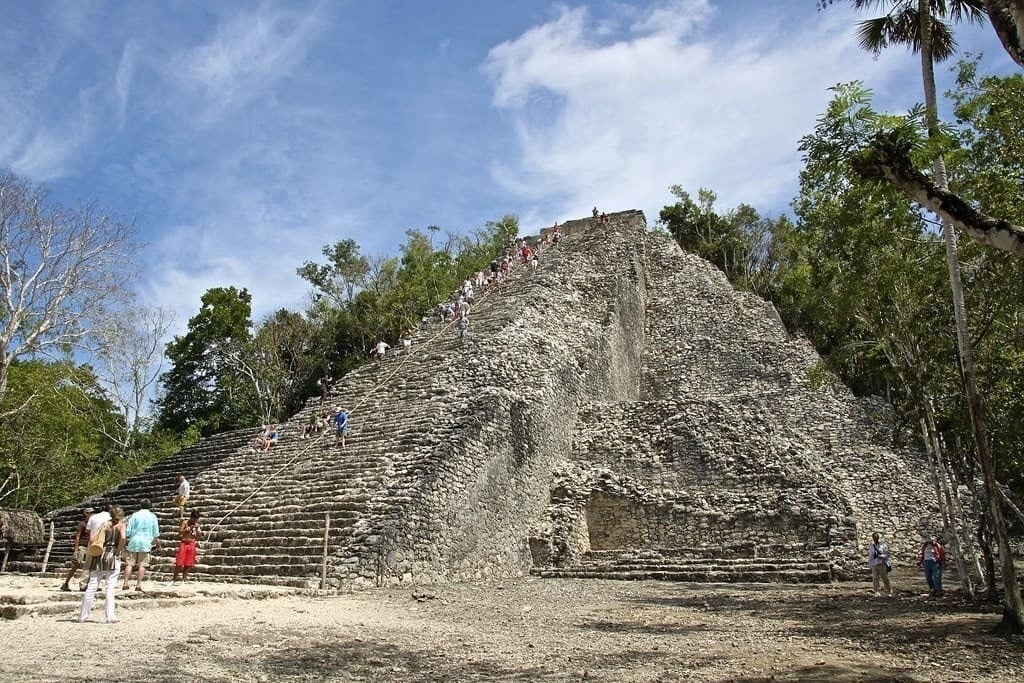
In the heart of Coba is the Ovan Temple, also known as Xaibé or The Observatory, an astronomical observatory that shows the deep mathematical and astronomical knowledge of the ancient Mayan civilization. It is a tangible testimony of the Mayan mastery in observing the sky and a symbol of the harmony that this culture sought between the Earth and the cosmos.
Its rounded design reflects an advanced understanding of celestial movements and astronomical cycles. It exemplifies that the Mayans aligned their buildings with the sky. As you explore the Xaibé Temple, try to imagine the ancient Mayans using this observatory to record significant astronomical events, marking time and celebrating the eternal dance of the stars.
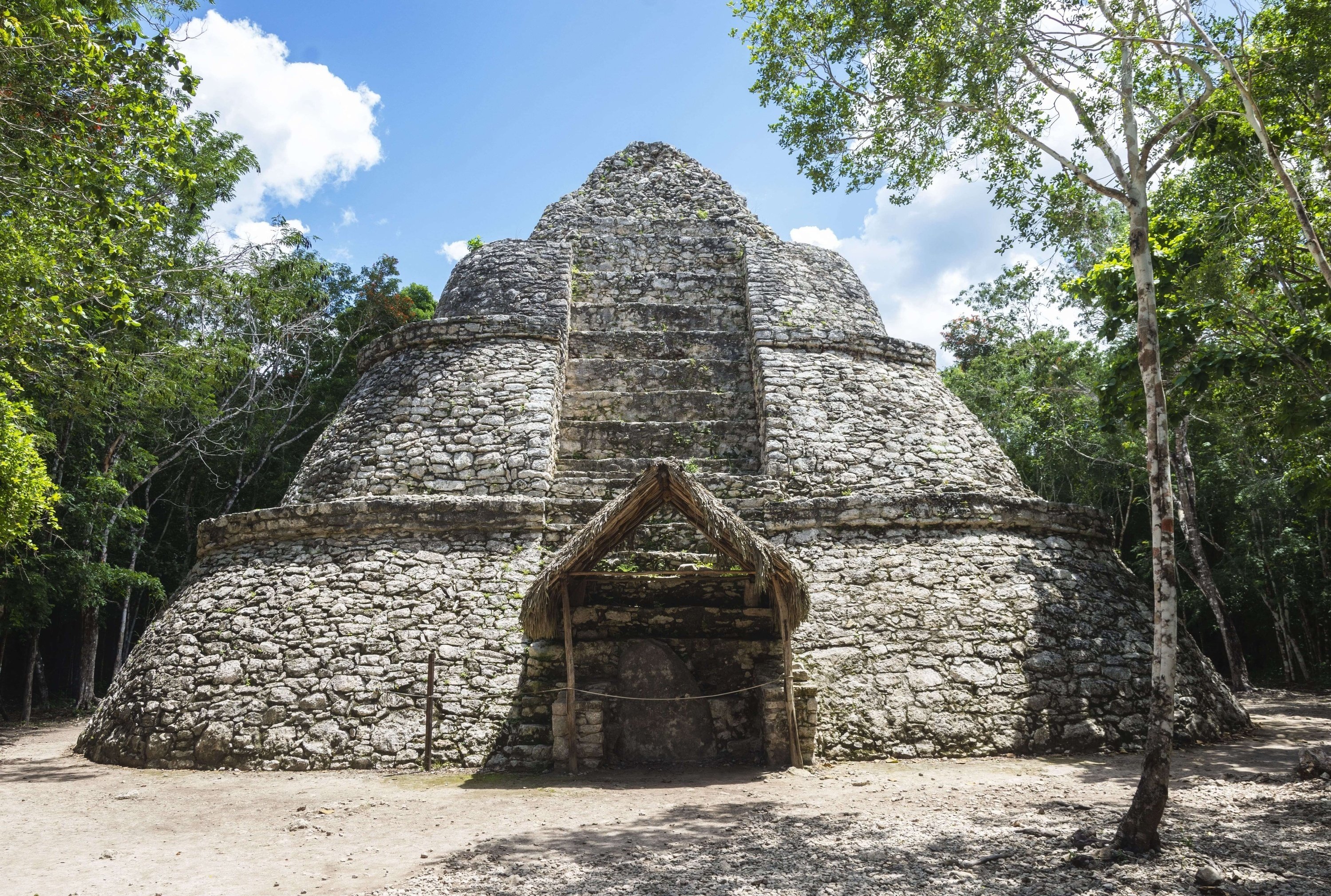
This architectural complex is the second tallest in Coba, at 24 meters high. Every architectural detail of La Iglesia (The Church) tells a story of devotion and connection with the divine. From the intricate sculptures to the stone carvings, each element reveals the Mayan commitment to their ceremonial and religious practices.
As you walk around La Iglesia, you will feel how spirituality permeates the air, you will imagine the rituals that took place in this sacred area and you will connect with the energy that persists in each rock.
Let's transport ourselves to the past and relive the excitement of the ancient Mayan Ball Games (played since 1400 BC) on the ceremonial field of Coba. Here the game transcended the physical to become a ritual and spiritual act.
We invite you to imagine the grandeur of this field, where competitions were held that went beyond mere athletic prowess. The Ball Games were a manifestation of the worldview of this civilization, where sport was mixed with the sacred as an offering to the gods.
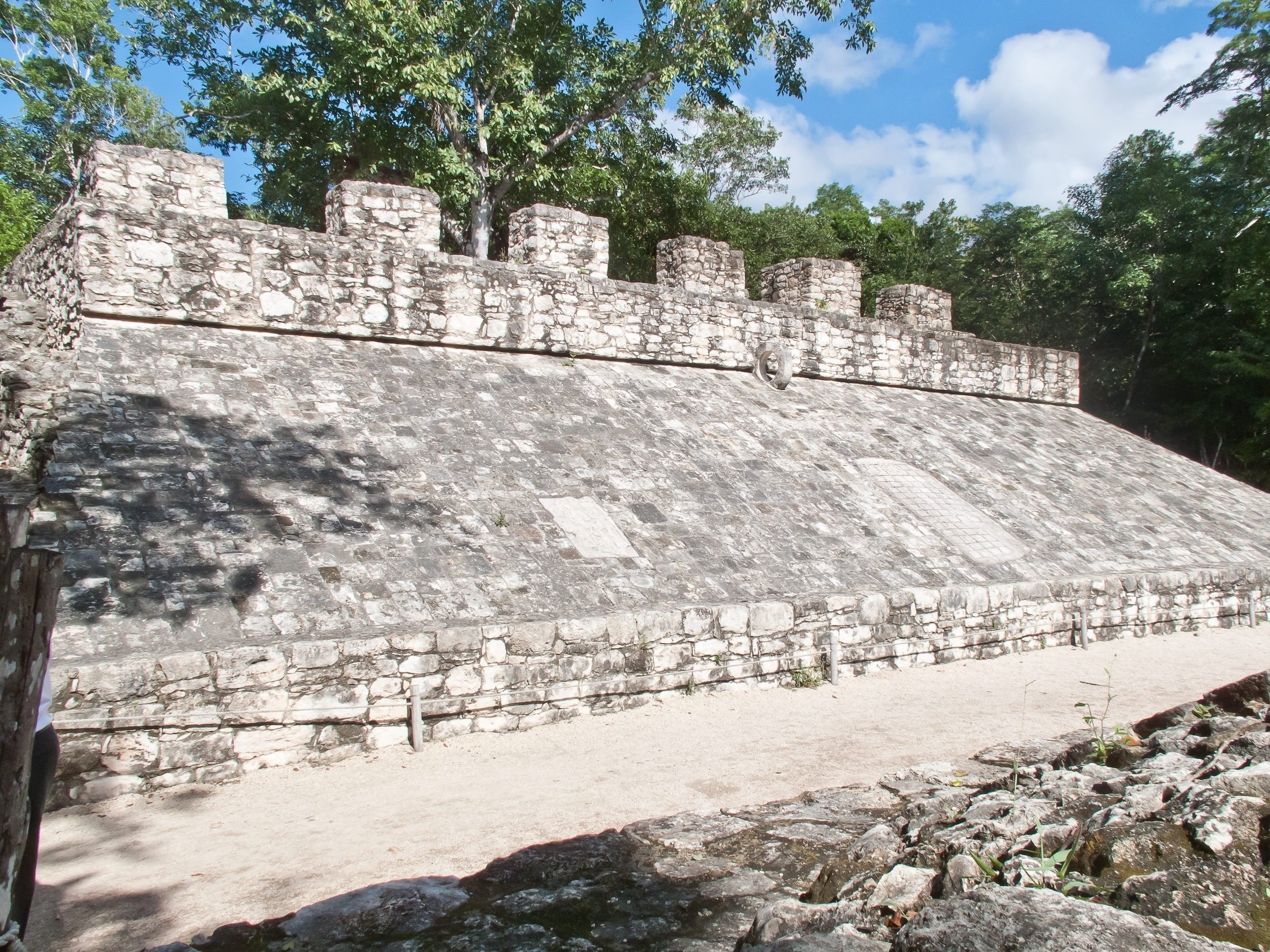
We now enter the well-known Group of Paintings in Coba, where the walls bear witness to the fascinating stories of the daily life and beliefs of the Mayans. The artists of this civilization captured their experiences and beliefs with exceptional mastery.
It is not only a set of murals, but it is an open-air museum that presents a rich collection of artistic expressions. You will also find the Templo de las Pinturas (Temple of Paintings), a well-preserved building both inside and out. Each brush stroke, made with natural pigments, tells a story.
Enjoying the wonders of Coba has a cost that is worth every peso. Admission gives you access to extraordinary cultural heritage. Please note that the cost may vary, so it is advisable to check the updated rates before your visit.
It is believed that Coba was founded in the late preclassic period and reached its peak between 600 and 900 AD. Strategically located between two bodies of water, this Mayan city flourished as a commercial and cultural center.
During the classical period, Coba became a regional power. Its unique architecture, with the impressive Nohoch Mul Pyramid as its centerpiece, highlights the advanced urban planning of the Mayans. As the classical period drew to a close, Coba experienced a gradual decline. Although the exact reason for its abandonment is not completely clear, it is suggested that factors such as political conflicts and environmental changes could have contributed.
The rediscovery of Coba in the 19th century by explorers and archaeologists, has allowed a deeper understanding of its history. Each excavation reveals new secrets, from ancient ceremonial structures to artifacts that shed light on the daily lives of the Mayans.
Coba goes beyond history. We invite you to discover the natural jewels of the Mayan Jungle, such as the freshness of the lakes that surround the archaeological complex, as well as the cenotes of San Juan de Dios, Multun-Ha, Choo-Ha and Tamcach-Ha. These crystalline oases offer not only a refreshing escape, but also a glimpse into the stunning natural beauty that surrounds this archaeological treasure.
Known as they are in the town of San Juan de Dios, these two cenotes are known by their names: Muul’ich Ts’on’ot and the Xamán cave. They are part of the underground network of rivers and caverns that characterizes the Yucatan Peninsula. The purity of the water invites you to enjoy a refreshing dip while you marvel at the visibility that characterizes these magical places.
Discover the amazing wonder that Multun-Ha contains, a cenote with turquoise waters that, due to this color, is considered the most beautiful in Coba, in addition to being the deepest. At Multun-Ha, every corner invites you to explore the natural beauty while enjoying the peace that only a cenote of this magnitude can provide.
Discover the fascinating journey that awaits you in Choo-Ha, an underground cenote that dazzles with its captivating rays of light. It invites you to explore the darkness with the enchanting guidance of its illuminations and long stairs, revealing an underground world full of mystery and wonder, with shallow waters.

Explore the majesty of Tamcach-Ha, a cavernous cenote that captivates with its large vault. With its enveloping cavern and depth, it offers a unique corner where you can snorkel and dive from its two platforms located on the stairs.
Explore, learn and immerse yourself in the greatness of Coba. An experience that combines history, nature and adventure to create indelible memories. Get ready to discover the best of this Mayan gem!
At Park Royal Hotels & Resorts, we are always available so that you can stay at any of our hotels in Cancun and Cozumel: Grand Park Royal Cancun, Park Royal Beach Cancun, The Villas Cancun by Grand Park Royal, and Grand Park Royal Cozumel.
There are five ways to get from Cancun to Coba: by bus, taxi, shuttle bus, car, or by booking a sightseeing tour. If you are in Cozumel, take a ferry that leaves you in Playa del Carmen and from there take a bus to Xpu Ha, to finally take a car to Coba; or take a shuttle bus to Coba. Welcome to the wonder of Coba!
Coba is located in the state of Quintana Roo, halfway between Tulum and Valladolid. Surrounded by dense tropical jungle and 5 lakes (hence its well-known name as "the city of 5 lakes"), the Mayan city emerges as a majestic testimony of the greatness of the civilization that inhabited it, in fact, it was the largest Mayan city in the north of the Yucatan Peninsula.
We open its doors to embark on a spectacular tour through the majestic Mayan ruins and the magical crystalline cenotes, immersing ourselves in the historical and natural wealth that this destination has to offer.
Archaeological zone of Coba
It is one of the most visited sites in Mexico, due to its location and its unrestored architectural complexes, where the Mayan past comes to life. In this archaeological complex is the Nohoch Mul Pyramid (which is the highest in the Yucatan Peninsula and the second largest in Mayan history, with 42 meters high), the enigmatic Ovan Temple (Xaibé), the serenity of La Iglesia, the energy of the Ball Games, and the fascinating Mayan wall paintings. Each structure tells a unique story of this civilization, unraveling its secrets as we walk among its vestiges.
The Pyramid of Nohoch Mul
In the impressive landscape of Coba stands imposing Nohoch Mul, the pyramid that rises majestically to offer us a unique vision of the ancient city of Coba and its natural environment. It is the tallest ceremonial building in the Yucatan Peninsula and the second in Mayan history, at 42 meters high.
It is the only pyramid you can climb in this archaeological complex. Ascending its steps (120 no more and no less) is to enter the greatness of the Mayan civilization, an experience that fuses history, nature and spirituality. From the heights, the panoramic perspectives of the exuberant Yucatecan jungle will envelop you.
Nohoch Mul is not just a stone structure, it is a tangible connection to the splendor of the Mayan civilization. Each of its blocks tells an ancient story and as you ascend you immerse yourself in the vision and wisdom that the Mayans captured in this colossal building.

Ovan Temple (Xaibé) or The Observatory
In the heart of Coba is the Ovan Temple, also known as Xaibé or The Observatory, an astronomical observatory that shows the deep mathematical and astronomical knowledge of the ancient Mayan civilization. It is a tangible testimony of the Mayan mastery in observing the sky and a symbol of the harmony that this culture sought between the Earth and the cosmos.
Its rounded design reflects an advanced understanding of celestial movements and astronomical cycles. It exemplifies that the Mayans aligned their buildings with the sky. As you explore the Xaibé Temple, try to imagine the ancient Mayans using this observatory to record significant astronomical events, marking time and celebrating the eternal dance of the stars.

La Iglesia
This architectural complex is the second tallest in Coba, at 24 meters high. Every architectural detail of La Iglesia (The Church) tells a story of devotion and connection with the divine. From the intricate sculptures to the stone carvings, each element reveals the Mayan commitment to their ceremonial and religious practices.
As you walk around La Iglesia, you will feel how spirituality permeates the air, you will imagine the rituals that took place in this sacred area and you will connect with the energy that persists in each rock.
Ball Games
Let's transport ourselves to the past and relive the excitement of the ancient Mayan Ball Games (played since 1400 BC) on the ceremonial field of Coba. Here the game transcended the physical to become a ritual and spiritual act.
We invite you to imagine the grandeur of this field, where competitions were held that went beyond mere athletic prowess. The Ball Games were a manifestation of the worldview of this civilization, where sport was mixed with the sacred as an offering to the gods.

Group of Paintings
We now enter the well-known Group of Paintings in Coba, where the walls bear witness to the fascinating stories of the daily life and beliefs of the Mayans. The artists of this civilization captured their experiences and beliefs with exceptional mastery.
It is not only a set of murals, but it is an open-air museum that presents a rich collection of artistic expressions. You will also find the Templo de las Pinturas (Temple of Paintings), a well-preserved building both inside and out. Each brush stroke, made with natural pigments, tells a story.
Practical Information: how much does the entrance to Coba cost and its schedule?
Enjoying the wonders of Coba has a cost that is worth every peso. Admission gives you access to extraordinary cultural heritage. Please note that the cost may vary, so it is advisable to check the updated rates before your visit.
- The access price is 190 pesos per person and the access time is from 8:00 a.m. to 5:00 p.m. If you want to enter outside of these hours (6:30 a.m. to 8:00 a.m. or from 5:00 p.m. to 7:00 p.m.) you will have to pay 240 pesos per person (these prices may change).
- Buy your tickets in advance. Avoid setbacks and secure your entry by purchasing your tickets in advance. Some times of the year may have higher demand, so get ahead!
- Choose the right time of day. Do you prefer the freshness of the morning or the magical atmosphere at dusk? Adjust your visit to enjoy Coba at the time of day that most appeals to you.
- Explore calmly. Coba is vast and full of treasures. Plan your day to explore it calmly. It is recommended to explore it by bicycle or on foot: the first option costs 50 pesos all day (you can also rent a motorcycle taxi). Another recommendation is to hire an excursion with guides.
History of the Mayan Ruins of Coba
It is believed that Coba was founded in the late preclassic period and reached its peak between 600 and 900 AD. Strategically located between two bodies of water, this Mayan city flourished as a commercial and cultural center.
During the classical period, Coba became a regional power. Its unique architecture, with the impressive Nohoch Mul Pyramid as its centerpiece, highlights the advanced urban planning of the Mayans. As the classical period drew to a close, Coba experienced a gradual decline. Although the exact reason for its abandonment is not completely clear, it is suggested that factors such as political conflicts and environmental changes could have contributed.
The rediscovery of Coba in the 19th century by explorers and archaeologists, has allowed a deeper understanding of its history. Each excavation reveals new secrets, from ancient ceremonial structures to artifacts that shed light on the daily lives of the Mayans.
Magical lakes and cenotes in Coba
Coba goes beyond history. We invite you to discover the natural jewels of the Mayan Jungle, such as the freshness of the lakes that surround the archaeological complex, as well as the cenotes of San Juan de Dios, Multun-Ha, Choo-Ha and Tamcach-Ha. These crystalline oases offer not only a refreshing escape, but also a glimpse into the stunning natural beauty that surrounds this archaeological treasure.
Cenotes of San Juan de Dios
Known as they are in the town of San Juan de Dios, these two cenotes are known by their names: Muul’ich Ts’on’ot and the Xamán cave. They are part of the underground network of rivers and caverns that characterizes the Yucatan Peninsula. The purity of the water invites you to enjoy a refreshing dip while you marvel at the visibility that characterizes these magical places.
Multun-Ha
Discover the amazing wonder that Multun-Ha contains, a cenote with turquoise waters that, due to this color, is considered the most beautiful in Coba, in addition to being the deepest. At Multun-Ha, every corner invites you to explore the natural beauty while enjoying the peace that only a cenote of this magnitude can provide.
Choo-Ha
Discover the fascinating journey that awaits you in Choo-Ha, an underground cenote that dazzles with its captivating rays of light. It invites you to explore the darkness with the enchanting guidance of its illuminations and long stairs, revealing an underground world full of mystery and wonder, with shallow waters.

Tamcach-Ha
Explore the majesty of Tamcach-Ha, a cavernous cenote that captivates with its large vault. With its enveloping cavern and depth, it offers a unique corner where you can snorkel and dive from its two platforms located on the stairs.
How to get to Coba?
Explore, learn and immerse yourself in the greatness of Coba. An experience that combines history, nature and adventure to create indelible memories. Get ready to discover the best of this Mayan gem!
At Park Royal Hotels & Resorts, we are always available so that you can stay at any of our hotels in Cancun and Cozumel: Grand Park Royal Cancun, Park Royal Beach Cancun, The Villas Cancun by Grand Park Royal, and Grand Park Royal Cozumel.
There are five ways to get from Cancun to Coba: by bus, taxi, shuttle bus, car, or by booking a sightseeing tour. If you are in Cozumel, take a ferry that leaves you in Playa del Carmen and from there take a bus to Xpu Ha, to finally take a car to Coba; or take a shuttle bus to Coba. Welcome to the wonder of Coba!
